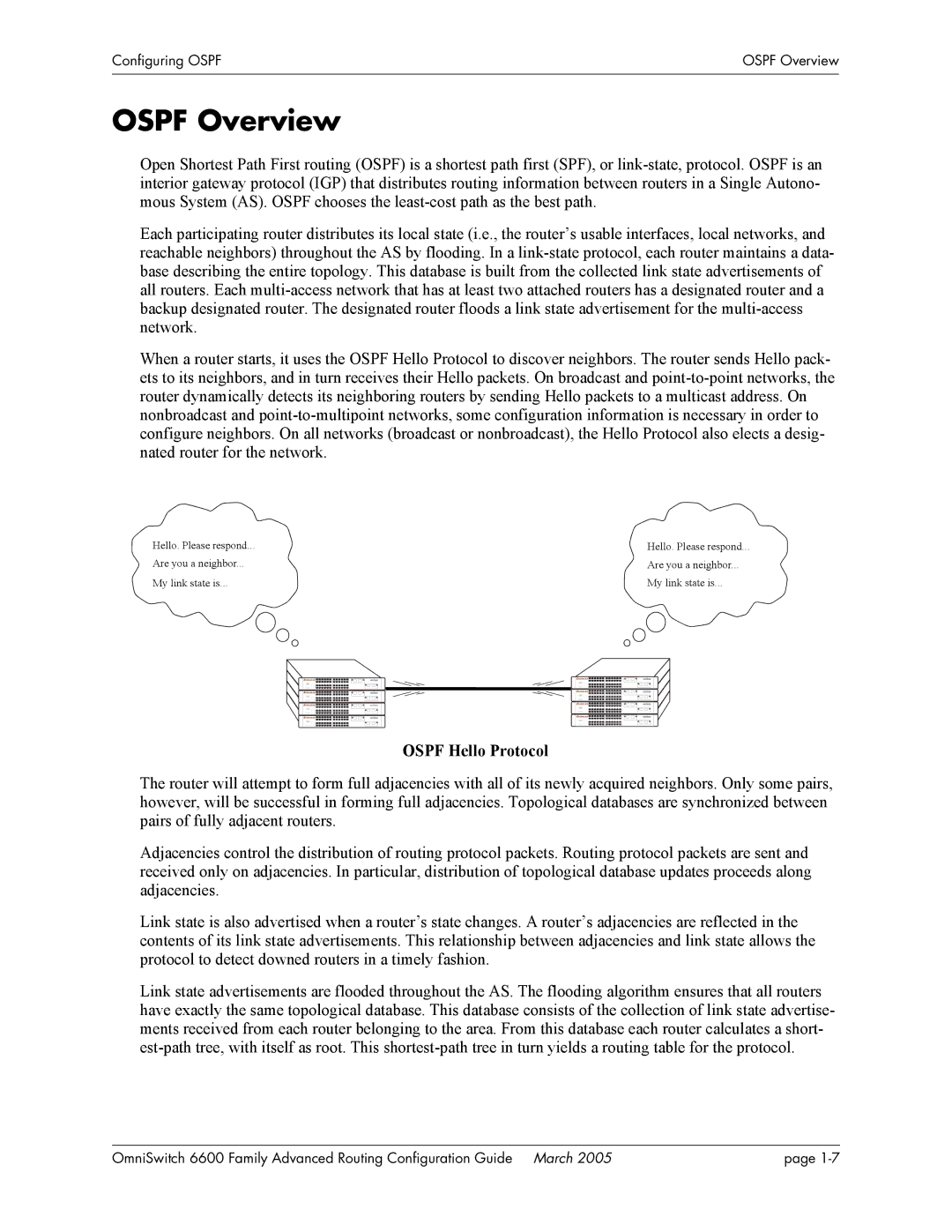
Configuring OSPF | OSPF Overview |
|
|
|
|
OSPF Overview
Open Shortest Path First routing (OSPF) is a shortest path first (SPF), or
Each participating router distributes its local state (i.e., the router’s usable interfaces, local networks, and reachable neighbors) throughout the AS by flooding. In a
When a router starts, it uses the OSPF Hello Protocol to discover neighbors. The router sends Hello pack- ets to its neighbors, and in turn receives their Hello packets. On broadcast and
Hello. Please respond... |
|
|
|
|
|
|
|
|
|
|
|
| Hello. Please respond... | |||
Are you a neighbor... |
|
|
|
|
|
|
|
|
|
|
|
| Are you a neighbor... | |||
My link state is... |
|
|
|
|
|
|
|
|
|
|
|
| My link state is... | |||
|
|
|
|
|
|
|
|
|
|
|
|
|
|
|
|
|
|
|
|
|
|
|
|
|
|
|
|
|
|
|
|
|
|
|
|
|
|
|
|
|
|
|
|
|
|
|
|
|
|
|
|
|
|
|
|
|
|
|
|
|
|
|
|
|
|
|
|
|
|
|
|
|
|
|
|
|
|
|
|
|
|
|
|
|
|
|
|
|
|
|
|
|
|
|
|
|
|
|
|
|
|
|
|
|
|
|
|
|
|
|
|
|
|
|
|
|
|
|
|
|
|
|
|
|
|
|
|
|
|
|
|
|
|
|
|
|
|
|
|
|
|
|
|
|
|
|
|
|
|
|
|
|
OSPF Hello Protocol
The router will attempt to form full adjacencies with all of its newly acquired neighbors. Only some pairs, however, will be successful in forming full adjacencies. Topological databases are synchronized between pairs of fully adjacent routers.
Adjacencies control the distribution of routing protocol packets. Routing protocol packets are sent and received only on adjacencies. In particular, distribution of topological database updates proceeds along adjacencies.
Link state is also advertised when a router’s state changes. A router’s adjacencies are reflected in the contents of its link state advertisements. This relationship between adjacencies and link state allows the protocol to detect downed routers in a timely fashion.
Link state advertisements are flooded throughout the AS. The flooding algorithm ensures that all routers have exactly the same topological database. This database consists of the collection of link state advertise- ments received from each router belonging to the area. From this database each router calculates a short-
OmniSwitch 6600 Family Advanced Routing Configuration Guide March 2005 | page |
